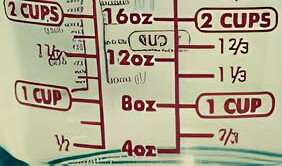Introduction
Understanding the liter to ounce conversion as well as how many ounces are in one liter is critical for anybody working in the food, research or other industries requiring precise measures. While the metric system, which utilizes liters as a measure of volume, is widely used across the world, ounces are part of the imperial system, which is more prevalent in the United States and a few other nations. The ability to precisely convert between these units may save you a lot of time, especially when dealing with recipes, performing scientific calculations, or simply buying beverages. For example, a liter may be the standard measurement on a soda bottle in Europe, but in the United States, it may be labeled in ounces. Knowing how to convert between these measurements enables you to follow instructions correctly, avoid mistakes, and save time. This article will explain the distinctions between liters and ounces, how to convert them, and why this knowledge is useful in both practical and everyday situations. By the end you will have a solid knowledge of this crucial conversion giving you the confidence to tackle any measurement related tasks that come your way.
Knowing About Liters and Ounces
Liters and ounces are the two units of volume estimation, however they come from two particular estimating frameworks that are widely utilized across the world. A liter is a unit of estimation in the decimal standard for measuring, which is utilized in by far most countries, fundamentally in Europe and Asia. A liter is characterized as the volume of a 3D square with sides of 10 cm every, which is comparable to 1,000 cubic centimeters or roughly 61 cubic inches. The liter is a standard unit of estimation for various fluids, including water and beverages.
On the other hand, ounces are a component of the imperial system and are widely used in the United States and a few other countries, including the United Kingdom. Meanwhile, it is critical to recognise that there are two sorts of ounces: US fluid ounces and UK (imperial) fluid ounces. The US fluid ounce is somewhat larger measuring around 29.5735 milliliters, whereas the UK fluid ounce is about 28.4131 milliliters. This seemingly little change can have major repercussions especially in areas where accuracy is required, such as baking or scientific research. Understanding the underlying differences between these units is crucial for accurate conversions and applications allowing you to easily switch between measuring systems.
How Many Ounces Are In One Liter?
Converting liters to ounces can be challenging due to measurement system differences particularly between the United States and the United Kingdom. In the United States, one liter is approximately 33.814 fluid ounces. This means that a one liter bottle of Coke contains about 33.814 US fluid ounces. In the United Kingdom, one liter equals roughly 35.195 imperial fluid ounces. This disparity occurs because the US fluid ounce and the UK fluid ounce are not the same size, with the US fluid ounce being slightly larger.
This distinction is important to understand, especially when following recipes or conducting scientific experiments that require precise measurements. For example, if a recipe calls for one liter of liquid, the difference in fluid ounces between the US and UK systems may have a little effect on the output if not adequately accounted for. Furthermore, in scientific computations where precision is vital, understanding which system you’re working with is essential for preventing errors. As a result, knowing the correct conversion and the measurement system in use is crucial for achieving accurate and successful results.
Practical Applications Of Liter To Ounce Conversion
Understanding ounces has numerous practical applications on sections beyond the kitchen and laboratory. Cooking recipes from around the world, for example, may use liters or ounces depending on where they are from. A recipe from Europe may specify ingredients in liters, but one from the United States may use ounces. Being able to convert between these units allows you to exactly follow any recipe, regardless of source, ensuring that your cuisine comes out as intended.
Exact estimations are as often as possible expected in logical examination to guarantee that the review is fruitful. Knowing the exact change among liters and ounces may be fundamental while blending synthetic compounds or estimating fluids. Knowing the right transformation among liters and ounces will assist you with keeping away from blunders that could endanger the results of your request. Also, this data is valuable in regular circumstances, for example, buying drinks or different fluids promoted in numerous units. For instance, in the event that you are voyaging abroad, you could go over drink holders marked in liters as opposed to ounces, and knowing how to quickly change over these amounts could make shopping more straightforward.
Also, comprehending this translation may be useful in industries such as medicine, which require precise dosing. In such circumstances, exact translation between liters and ounces may be required to guarantee that patients receive the proper dose of medication. Overall, understanding this conversion not only simplifies but also improves.
Tips for Getting Accurate Measurements
Precise estimation is critical in numerous industries, including cooking, research, and just measuring fluids for everyday usage. Here are a few tips that help you go from liters to ounces like clockwork. It is critical to use a reliable transformation device or number cruncher on a consistent basis. With so many online tools available, you may effortlessly convert liters to ounces and vice versa without the risk of making a mistake. These gadgets are especially useful if you are in a hurry or need to make a lot of adjustments quickly.
Second, you must know if you are dealing with US or UK fluid ounces. This information is critical since using the improper conversion can result in errors. For instance, converting a liter to US fluid ounces when it should be UK fluid ounces might significantly alter the amount you end up with, which can be problematic in both cooking and scientific scenarios.
Third, using the proper measuring equipment is crucial. Graduated cylinders, measuring cups and other precise tools can help you take the most exact measurements possible. This is especially important in scientific enquiries, because even tiny errors might yield erroneous results.
Finally, always double check your measurements, especially if accuracy is necessary. When precision is necessary, taking the time to double check your conversions and measurements will help you prevent costly errors. By following these recommendations, you may ensure that your measurements are precise and reliable, allowing you to work more efficiently and effectively.
Differences Between US and UK Fluid Ounces
Understanding the distinctions between US and UK fluid ounces is crucial, especially for those working with exact measurements. The US fluid ounce is based on the US customary system, and one fluid ounce equals approximately 29.5735 milliliters. In the United States, this measurement method is standard for most recipes, beverage containers, and other everyday applications.
However, the UK fluid ounce, which is part of the imperial system, varies slightly. A UK fluid ounce is roughly 28.4131 milliliters. Although the difference between the two measurements appears tiny, it can add up, especially when dealing with larger volumes. For example, suppose you are converting liters to ounces for a large volume of liquid, the difference between using US and UK fluid ounces might be significant.
This discrepancy is especially important to consider when following a recipe or doing a scientific experiment requiring precise measures. If a UK recipe specifies a certain number of fluid ounces and you unintentionally use US fluid ounces, the result may be slightly incorrect, potentially affecting the outcome of your meal or experiment. Similarly, in scientific settings, using erroneous measurements may result in data problems. Understanding these differences and keeping track of the system you are using is crucial for ensuring measurement accuracy.
Why Knowing This Conversion is Important
Understanding the liter to ounce conversion is important for several reasons. For starters, it allows for precise measurements during cooking. Whether you are following a recipe that requires precise amounts of liquid components or scaling a recipe up or down knowing how to convert between liters and ounces ensures that your meals work out as planned. This information is very useful when working with recipes from around the world, which may utilize different units of measurement.
Second, precise measurements are essential in both scientific and medical applications. In certain industries, even little measurement errors can have major consequences. For example, in a laboratory, converting liters to ounces with precision is critical for ensuring that experiments are conducted correctly and that the results are accurate. In the medical business, efficient pharmaceutical administration frequently demands precise conversions between several units of measurement.
Third, understanding the transformation is valuable in ordinary conditions. Whether you are purchasing drinks, estimating elements for a recipe or dealing with a do it yourself project knowing how to change over among liters and ounces can make life simpler and more effective. Moreover, understanding this transformation can assist you with upgrading your general numeracy abilities, permitting you to deal with a more extensive scope of estimation related undertakings in your everyday existence.
At long last, figuring out how to switch liters over completely to ounces and knowing the number of ounces that are in one liter is a valuable expertise in different situations. Whether you are cooking, leading examination or just estimating fluids for regular use, understanding this interpretation can assist you with doing it precisely and unhesitatingly.
Conclusion
Understanding how many ounces are in one liter is a fundamental skill with various applications. Whether you are cooking, conducting scientific research, or just getting around, understanding this conversion can make your life easier and more efficient. You may ensure precision in all of your activities by understanding the differences between US and UK fluid ounces and following correct measuring guidelines. This comprehensive tutorial has provided you with all of the knowledge you need to learn the liter to ounces conversion giving you the confidence and capability to manage a wide range of measurements. Whether you are a student, a professional, or just somebody who enjoys cooking, this is for you.

